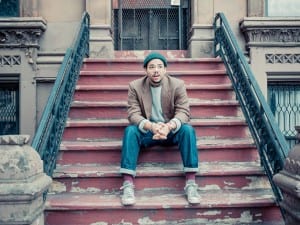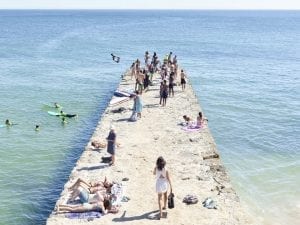This exhibition in the Marais district of Paris looks at Bettina, the signature model of the 1950s, in photographs and sketches from an array of practitioners. The work studies her life, beginning with her childhood spent in Normandy, where she studied painting from an early age; the war spent with her sister and grandmother in Angers, before her grandmother was killed in a bombing raid and the two girls moved to Agen before returning to Elbeuf, where they lived until the Liberation. Bettina emerged from these difficult years, and from several brushes with death, unscathed and perhaps stronger, having learnt that she was naturally fearless.
Before the age of 18, Bettina watched Janine Charrat dancing The Dying Swan at the cinema and decided to become a dancer. She made herself a pair of ballet shoes by stuffing the toes of some espadrilles and began to learn to dance with a friend; they later appeared on stage at a local youth club party and Bettina caught the eye of an American dancer who gave her a pair of real ballet shoes and began to teach her.
Bettina moved to live with her sister in Paris at 18, intent on becoming not a dancer, but with her art lessons showing promise, a fashion designer. She soon arranged an interview with Jacques Costet, a young couturier who had recently opened his showrooms; that interview was to change her life. Costet ended the interview by asking Bettina to try on a magnificent dress. When she came out of the changing room, Costet told her: ‘Come back this afternoon. You will start as a model!’
The second chapter of Bettina’s life began as she embarked on an extraordinary 12-year career. Her very first photographs date back to the Costet period, by which time she had already caught the eye of the Seeberger brothers, who introduced her to the world of the visual image. She then moved from designer Lucien Lelong to Jacques Fath, who christened her Bettina and whose muse she soon became. Working for Vogue and Elle, Bettina became the top cover girl in France within a matter of months and the world’s top fashion photographers fought over her; among them Irving Penn, Dick Dormer, Norman Parkinson, Erwin Blumenfeld, Henry Clarke, Gordon Parks, Jean-Philippe Charbonnier and even Henri Cartier-Bresson – who had been famously anti-fashion photography.
Bettina’s work took her to the United States, Brazil and Argentina and Capri, joining Ford models in New York in 1950s before moving back to Paris in 1952 to assist Hubert de Givenchy in starting his couture house. In 1955, the midst of it all, Bettina met the love of her life and abruptly left the fashion world behind. Still, she was the inspiration behind the 1967 collection of Coco Chanel, her last official modelling assignment, and went on to be both unofficial model and art director for Emanuel Ungaro and Valentino.
Bettina, until 11 January, Galerie Azzedine Alaïa, 18 Rue De La Verrerie, 75004 Paris.
Further information can be found at www.alaia.fr.
Follow us on Twitter @AestheticaMag for the latest news in contemporary art and culture.
Credits
1. Bettina Graziani in a 1957 Givenchy hat. Photo by Frank Horvat.





